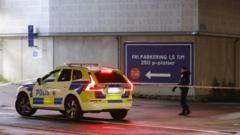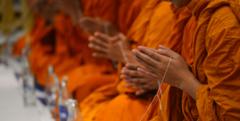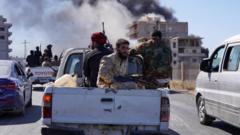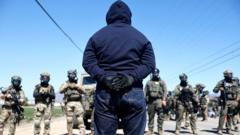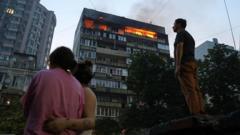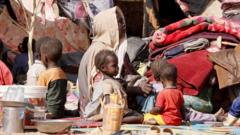Since the deployment of drones equipped with explosives against gangs capturing the capital, metrics on effectiveness are mixed despite claims of reduced violence and a rising death toll among gang members. Meanwhile, Canadian authorities question the legality of these tactics.
Haiti's Drone Warfare: Is it Legal and Effective?

Haiti's Drone Warfare: Is it Legal and Effective?
The Haitian government's use of drones in its ongoing battle against gang violence raises serious legal and ethical questions, as experts warn of potential violations of international law.
The article explores the motivations and implications of Haiti's drone operations, the pushback from human rights groups, and the dire straits facing the nation as it grapples with persistent gang domination.
The Haitian government has ventured into an uncharted territory of drone warfare, aiming to reclaim territory from gangs that have overtaken much of the capital, Port-au-Prince. A recent video from local authorities showcased the heightened tension, as notorious gang leader Vitel’homme Innocent, with a bounty of $2 million on his head, was seemingly caught amidst an aerial onslaught.
With explosive-laden drones making their mark, the government is presenting its efforts to confront organized crime after years of escalating violence that has displaced 1.3 million residents. However, despite the assertion of diminishing gang activity following three months of drone strikes, critical observers express doubt about the overall impact. Reports from human rights organizations indicate that at least 300 gang members have died; however, no significant gang leaders have been apprehended or killed during these operations.
In what could be perceived as a sharp rebuke to Haiti's approach, the Canadian police, who supplied the drones, have labeled these strikes illegal. This assertion raises critical questions about the legitimacy of targeting criminal organizations in such a manner and its implications under international law.
The driving force behind the drone campaign stems from the Haitian government's struggle against a coalition of gangs known as Viv Ansanm, which has aggressively challenged governmental authority through violent acts that include extortion, kidnapping, and control over significant parts of the urban center. The gangs have successfully claimed roughly 80 percent of Port-au-Prince, overwhelming the local police force.
As the government seeks to fortify its grip amid an expanding crisis, the effectiveness of drone warfare in addressing the root causes of instability remains in question.
The Haitian government has ventured into an uncharted territory of drone warfare, aiming to reclaim territory from gangs that have overtaken much of the capital, Port-au-Prince. A recent video from local authorities showcased the heightened tension, as notorious gang leader Vitel’homme Innocent, with a bounty of $2 million on his head, was seemingly caught amidst an aerial onslaught.
With explosive-laden drones making their mark, the government is presenting its efforts to confront organized crime after years of escalating violence that has displaced 1.3 million residents. However, despite the assertion of diminishing gang activity following three months of drone strikes, critical observers express doubt about the overall impact. Reports from human rights organizations indicate that at least 300 gang members have died; however, no significant gang leaders have been apprehended or killed during these operations.
In what could be perceived as a sharp rebuke to Haiti's approach, the Canadian police, who supplied the drones, have labeled these strikes illegal. This assertion raises critical questions about the legitimacy of targeting criminal organizations in such a manner and its implications under international law.
The driving force behind the drone campaign stems from the Haitian government's struggle against a coalition of gangs known as Viv Ansanm, which has aggressively challenged governmental authority through violent acts that include extortion, kidnapping, and control over significant parts of the urban center. The gangs have successfully claimed roughly 80 percent of Port-au-Prince, overwhelming the local police force.
As the government seeks to fortify its grip amid an expanding crisis, the effectiveness of drone warfare in addressing the root causes of instability remains in question.


